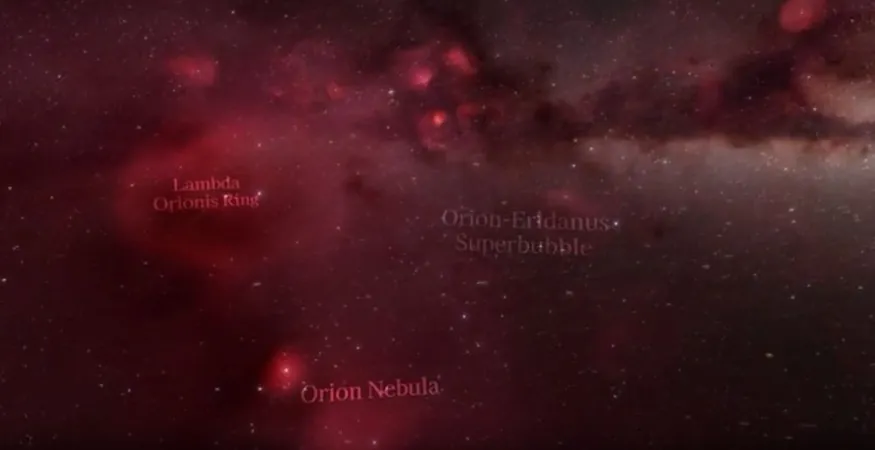
Soar Through Gaia's Stellar Nurseries in a Stunning New 3D Video!
2025-09-16
Author: Jia
When the European Space Agency (ESA) launched the Gaia spacecraft back in 2013, it might not have garnered the hype of other groundbreaking missions like the James Webb Space Telescope. But don't be fooled—while Gaia lacks the breathtaking images of distant worlds, it has delivered a treasure trove of astronomical data unlike anything seen before.
Gaia was designed for astrometry, focusing on the precise measurement of star positions, velocities, and magnitudes. Over its 10.5-year mission, it catalogued a staggering 1.8 billion celestial objects, creating the most detailed map of our Milky Way galaxy ever compiled. This foundational data is invaluable for scientists and will influence astronomical studies for generations.
Explore the Milky Way's Stellar Nurseries!
Now, the ESA has unveiled an exhilarating fly-through video that explores some of the Milky Way's most vibrant stellar nurseries—regions where new stars are being born within sprawling molecular clouds. Get ready to virtually journey through spectacular locations like the Gum Nebula, the North American Nebula, the California Nebula, and the Orion-Eridanus superbubble!
The Nebula Wonders Awaits!
The **Gum Nebula**, located about 1,470 light-years away, was once believed to be the aftermath of a supernova. Surprisingly, it contains the mesmerizing 11,000-year-old Vela Supernova Remnant and hosts cometary globules—not actual comets, but rather intense sites of star formation with tail-like features formed by stellar radiation.
Next is the majestic **North American Nebula**, approximately 2,600 light-years away. Discovered by William Herschel in 1786, its southern section resembles Central America, hence its name. Thanks to Gaia's measurements, the nebula's distance has finally been confirmed!
Don't miss the enchanting **California Nebula**, about 1,000 light-years from Earth. Discovered in 1884, it lights up with the brilliance of Xi Persei, a hot and massive O-type star that’s over 12,000 times brighter than our Sun!
Finally, witness the colossal **Orion-Eridanus Superbubble**, a massive cavity spanning around 1,200 light-years, shaped by the explosive forces of 10 to 20 supernovae and the fierce stellar winds of young massive stars. Remarkably, it's speculated that our Sun may have traversed this bubble long ago.
Your Galactic Adventure Awaits!
This breathtaking 3D video promises an unforgettable cosmic journey, giving you an up-close look at regions where stars are born and the processes that shape our galaxy. Buckle up and enjoy the stellar ride!

 Brasil (PT)
Brasil (PT)
 Canada (EN)
Canada (EN)
 Chile (ES)
Chile (ES)
 Česko (CS)
Česko (CS)
 대한민국 (KO)
대한민국 (KO)
 España (ES)
España (ES)
 France (FR)
France (FR)
 Hong Kong (EN)
Hong Kong (EN)
 Italia (IT)
Italia (IT)
 日本 (JA)
日本 (JA)
 Magyarország (HU)
Magyarország (HU)
 Norge (NO)
Norge (NO)
 Polska (PL)
Polska (PL)
 Schweiz (DE)
Schweiz (DE)
 Singapore (EN)
Singapore (EN)
 Sverige (SV)
Sverige (SV)
 Suomi (FI)
Suomi (FI)
 Türkiye (TR)
Türkiye (TR)
 الإمارات العربية المتحدة (AR)
الإمارات العربية المتحدة (AR)